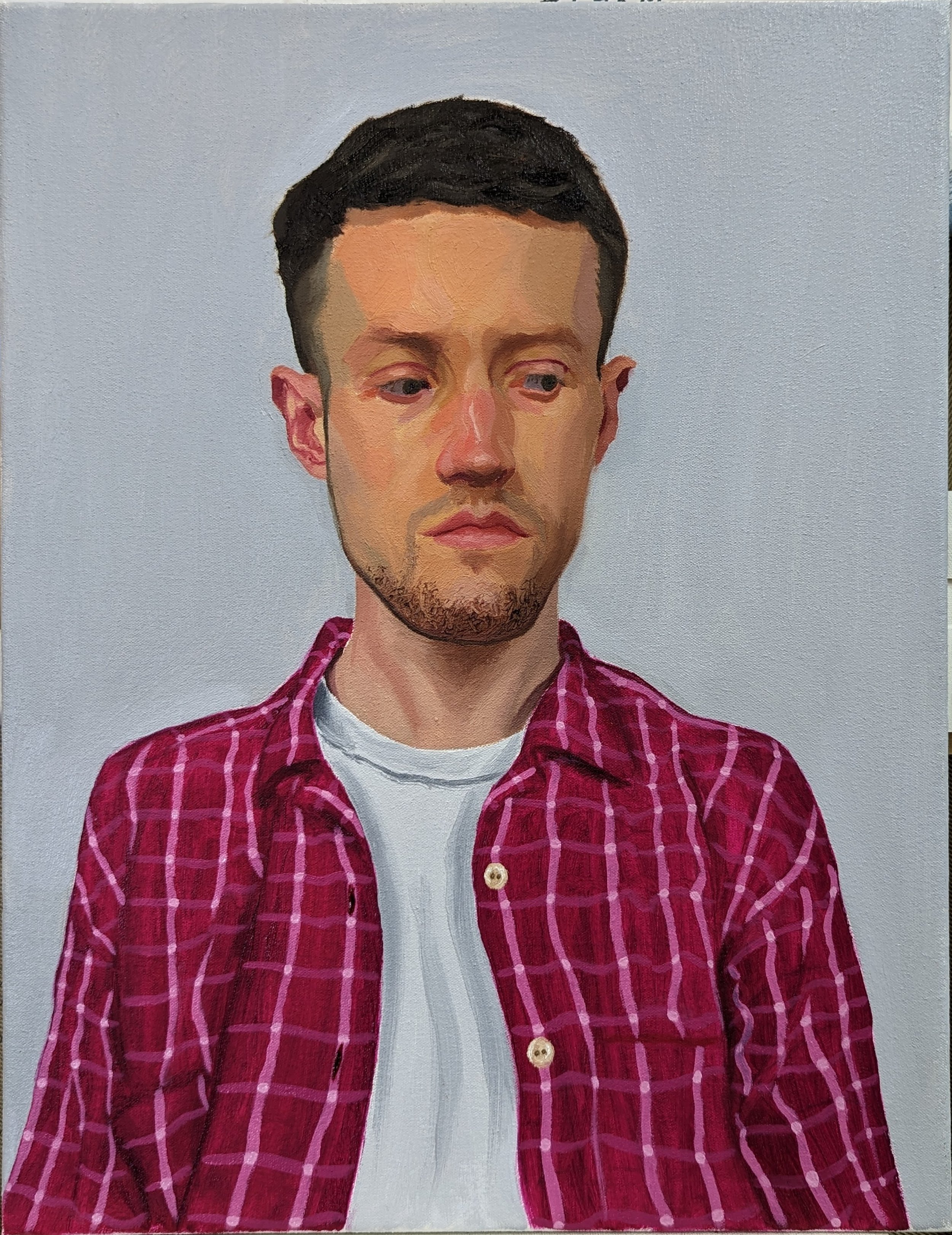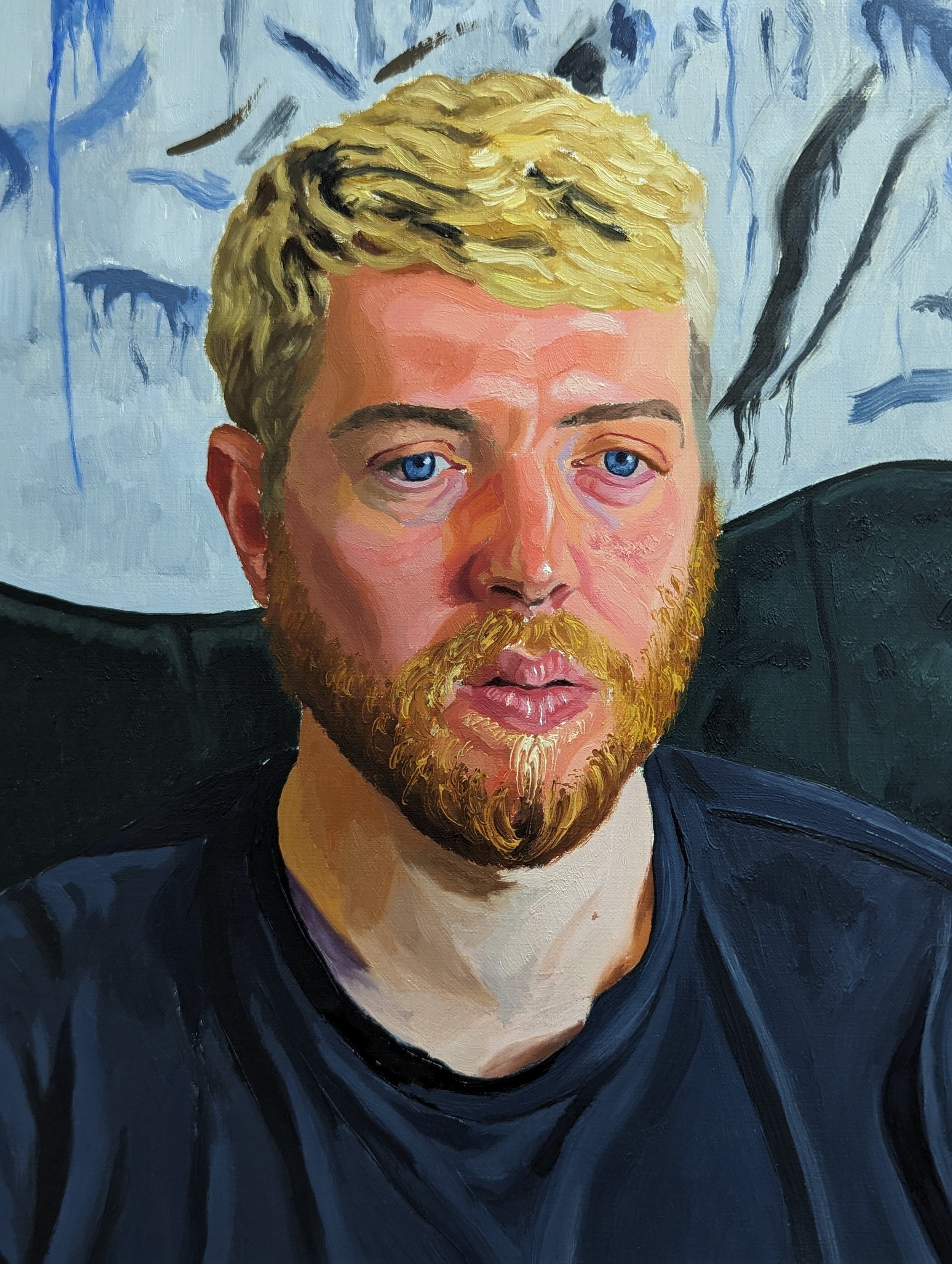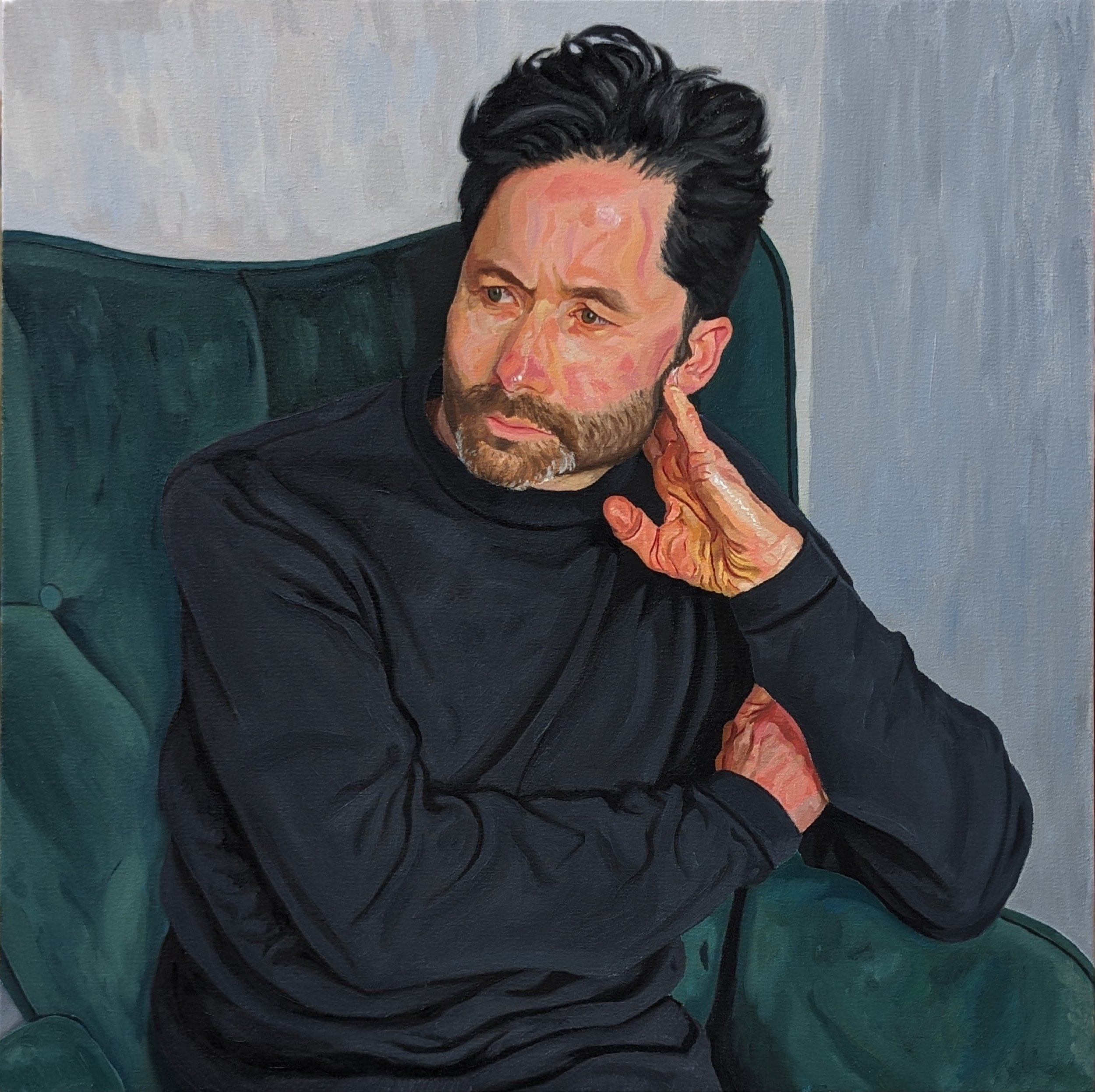ARTIST INTERVIEW: Josh Thomson
Please introduce yourself. What sparked your interest in art?
I am an artist living and working in Glasgow, making mainly portraits in oil, ink and pencil. My interest in art began in 2017, at which time I was studying physics at Heriot-Watt University in Edinburgh. I had made drawings on and off throughout my childhood but gave up very quickly each time. I never really thought about art through high school and instead pursued science. I played drums through high school as a creative outlet though.
At the start of summer between third and fourth year of uni in 2017, I found a documentary on Francis Bacon. The title - A Brush with Violence - caught my attention and I watched it and was amazed at his work and life story. I think I went to buy a sketchbook and pencils shortly after. I found a few tutorials on Youtube on how to draw, quickly became obsessed, got some oil paints fairly quickly after that and that was it.
Why are you drawn to portraiture? Have there been any artists in particular who have influenced your work?
Portraits have always felt like the natural choice of subject to paint. I've tried landscape, still life and abstract painting in the past but portraits have always excited me the most and allow me to more easily get into a state of creative flow. I'm really interested in people and their individuality. I also have an interest in psychology and so I think portraits are the natural course to follow. I'd like to try some landscapes and still lifes in the near future now that I feel a bit more confident in my painting abilities.
As for influences, I try to look at as many paintings as possible from throughout art history. My top two though would have to be Lucian Freud and Alice Neel. Also Goya and Rembrandt in terms of old masters.
What do you look for in a potential face to paint? Why do you focus on people in Glasgow?
Most of the people I've made a portrait of I have already known to some extent. Only a couple of times have I asked someone to sit for me whom I hadn't met before. As for what interests me about someone I'm not entirely sure. My relationship with the person has something to do with it, or if they have an interesting looking feature or a characterful personality. I love people's idiosyncrasies and aim to celebrate and exaggerate them slightly, in a loving way, in my portraits of them. It's also just a different way to get to know someone.
I'm focussing on people in Glasgow just now as it is my home city. I think the best art a person can make comes directly from their immediate environment, and so making portraits of people I know and see often in Glasgow is how I can make the best art I possibly can.
Your ’Self Portrait 26’ piece was shortlisted for the Ruth Borchard Self Portrait Prize, what was your creative process from start to finish of this piece? Why did you choose to paint yourself with the expression you did?
I tend to make a few self portraits each year. When I first started to make portraits, I was too nervous to ask most people if I could draw or paint them, so making self portraits was a good way to practice my skills, as I didn't (and still don't) really mind what I made myself look like. There is less pressure in a way.
For Self Portrait at 26, I was going through some creative block due to a breakup at the start of this year (2023). I often make self portraits during difficult periods in my life as they can be quite therapeutic. That painting was made in March-April as an attempt to get over the breakup and document how I was feeling at the time. I don't usually intentionally put meaning behind my work, but I thought my chromatic shirt and bright t-shirt would counter my despondent expression.
Who has been your favourite sitter to paint? What is the most interesting thing you have learnt from a sitter?
I don't think I could pick a favourite sitter. Each person has provided a unique and interesting experience whilst making their portrait. I've made multiple portraits of a couple of people, but that's just a result of having a few reference images of them that I thought could all work in some way.
I don't really want to mention anything specific about things I've learned and spoken about with people during sittings, but looking at and studying the structure of a person's face is always one of the most interesting and important parts of the sittings.
You use a variety of mediums in your practise. How do they reflect the mood/narrative of your work? Which is your favourite medium and why?
I'm not really trying to create a narrative with my portraits, I'm just trying to paint and draw the person as they are. Sometimes I feel a bit scared or hesitant to paint, and so making a pen or pencil drawing of someone helps me work out the structure and features of the person's face, which then helps when making the painting.
Oil paint is by far my favourite medium. I've been using it for 7 years now and only just this year I've started to be able to use it in the way I'd like to. The language of oil paint is so broad and there is still so much more that I'd like to do with it.
What does a typical day look like for you in the studio?
I work in a cafe four days a week and so I'm currently only able to get into my studio 2 days a week. I try to do at least one full day, about 10am-5/6pm. I work mostly from photos, out of practicality really (I'd like to be able to work from life more regularly in future), and so I will work on one painting for a few hours in the morning, then work on something different in the afternoon. I usually have multiple canvases on the go at one time, I think I have 5 in progress at the moment. If I have someone coming for a sitting, I'll make a pencil drawing of them over 2-3 hours then take some reference photos to make a painting in future. I also end up spending too much time on my phone, and I'll try to flick through some art books that I have lying around for some inspiration.
How does your artwork represent you as an individual? Are you a perfectionist?
I want my work to be a translation of my experience of the world, through the people and things I paint. I just want to document life as I see it.
I'm definitely a perfectionist. I think you have to be to a certain extent if you want your work - in any field - to be good enough. I get obsessed with details, and I want each of my pictures to be better than the last.
What has been your biggest achievement so far as an artist? Has there been any challenges?
My biggest achievement so far is having a painting selected for exhibition in a museum in Southport, England, through the Ruth Borchard Self Portrait Prize. To have been selected as one among 30 or so, out of all the entries, is still very surreal to me and I am very grateful to be included in that show.
There have been countless struggles! Painting is ridiculously hard and I have had countless bad paintings over the years and have destroyed quite a lot too. Failing is a major part of the process and learning to deal with the constant failure took a long time - and it's still something I struggle with. But eventually something works and a painting turns out well every now and then and it's very satisfying.
Why do you think art is important in society?
Art, to me, is the communication of the human experience. It's a universal language and, if it's any good, will evoke some emotion or feeling in the viewer. I'd guess almost every person enjoys some form of art - whether it's painting or music or TV/film - and so it's something we all have in common. I don't really know how you could make an argument against it.







